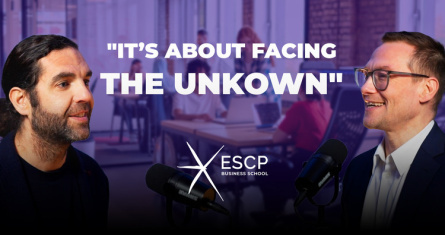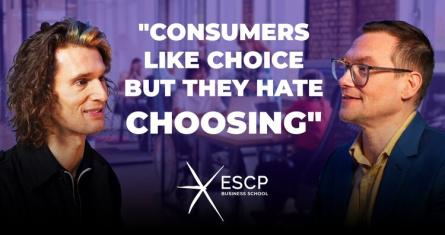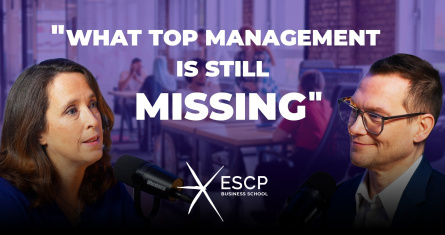ESCP Edge: an interview with Professor Rand Gerges-Yammine
In this episode of ESCP Edge, Prof. Rand Gerges-Yammine explores how design thinking equips entrepreneurs to solve real-world problems with empathy, structure, and user insight.
In today’s entrepreneurship landscape, continuous innovation is more than a competitive advantage—it’s a necessity. Rand Gerges-Yammine, Assistant Professor of Entrepreneurship at ESCP, explains how design thinking can fundamentally reshape the way ventures tackle challenges by placing user needs and experiences at their very core.
Beyond form: solving problems with empathy
“Design thinking is a methodology, but also a mindset—one that puts the user at the centre of all your designs,” says Gerges-Yammine. “For example, designing a chair isn’t just about aesthetics; it’s about solving the potential issues this user could face. If someone sits all day, they may need better back support or extra comfort.”
Design thinking offers a structured yet flexible framework that prioritises real-world needs over hypothetical assumptions. It is a way to discover unmet needs and test ideas through hands-on, immersive research. “The focus is on how we improve the lives of our users."
From insight to venture: putting users at the centre
Entrepreneurs today face constant pressure to move quickly. However, speed without a deep understanding of customer needs is a recipe for disaster. Gerges-Yammine stresses that the user-centric approach in design thinking is vital throughout the entire entrepreneurial process.
"Design thinking is essential for entrepreneurship because startups must solve real user problems. Investors often ask, 'What are you solving for your users?'—beyond market size or timing.”
When teaching design thinking for entrepreneurs, students start by engaging with potential users, conducting interviews, and immersing themselves in their experiences. “For example, students studying a Michelin-star restaurant in Paris posed as customers, testing scenarios like arriving without a reservation to observe staff reactions,” shares Gerges-Yammine. By engaging directly with potential users—through interviews and immersive research—entrepreneurs can gather critical data that informs their decisions and drives innovation.
This type of fieldwork enables entrepreneurs to identify points of friction and moments of tension within the user journey, providing valuable insights that often lead to innovation. “We see a lot of CEOs these days who are taking this approach,” she says. “They send individuals to do this type of research because it gives you a lot of insights.”
Empathy meets strategy
Design thinking is a holistic approach that integrates user empathy with structured methods to solve problems. The hands-on iterative approach challenges founders to test, listen, adapt, and repeat to validate their ideas. It helps create ventures that genuinely improve their users’ lives.
In today’s fast-paced market, where understanding and meeting user needs well makes all the difference, adopting design thinking is a strategic imperative for entrepreneurial success.
Design thinking is a methodology, but also a mindset—one that puts the user at the centre of all your designs.
 Professor Rand Gerges-Yammine
Professor Rand Gerges-YammineProfessor of Entrepreneurship
ESCP Business School
Campus



